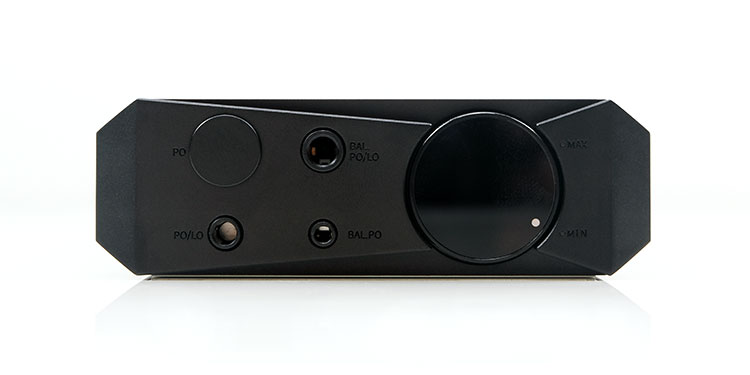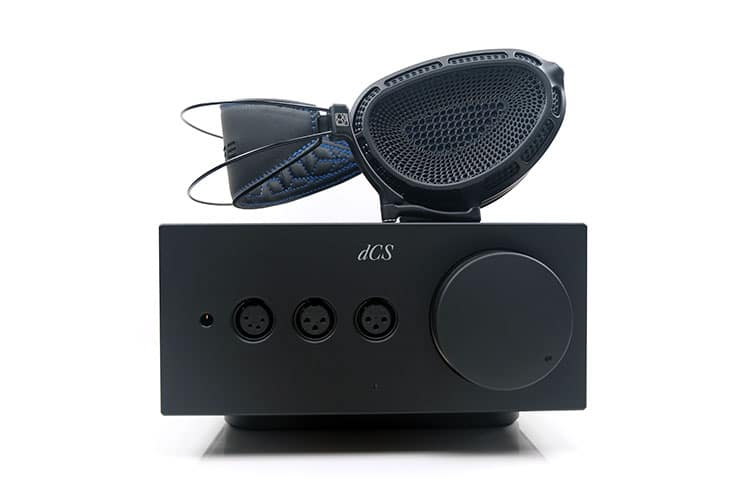Sound Impressions
Summary
The Dan Clark Audio EXPANSE is both technically brilliant and emotively engaging. It combines resolution with a natural-sounding timbre and for those who want a bit of power, it also slams beautifully. It has everything you want from a high-end headphone in terms of realism and enjoyability.
The last time I found a joyful combination of attributes like this was perhaps the final D8000 and to a lesser extent the Pro version also though I tend to find the Pro a ‘steady-Eddie’ in terms of frequency bias, i.e., quite neutral.
The EXPANSE is not a neutral headphone, but it is wonderfully balanced sounding and flexible enough to find common ground for a wide range of genres, though I do have a sweet spot for its authoritative presentation of hard rock classics.
It is also perhaps my favorite pairing to date with some of the big-hitting tube amplifiers I have on the rack such as the Cayin HA-300MK2. The holographic prowess of the Cayin allows the EXPANSE to live up to its name and inject some beautiful addictive richness into the mids timbre in the process.
I have a sneaking feeling that fans of the ‘old’ Audeze LCD house sound will take to the EXPANSE as the logical upgrade. It has that spirit with its meaty and somewhat analog quality to lower-mid guitar performances and gritty rock vocals. Addictive stuff, truly.
Frequency Response
So what has changed from the Stealth? Well, the Harman Response Curve is still somewhat there but this time we have some tweaks for the EXPANSE, most notably in the mid-base tuning and the upper-mids to lower-treble coherence.
On the low end, the sub-bass is still somewhat elevated but perhaps 1-2dB below the Stealth with a much greater emphasis on pushing forward the 100-200Hz region. That changes the dynamic of these headphones in a big way providing a much punchier and more energetic low-end response.
For me, this provides the EXPANSE with an additional level of energy and much better ‘drive’ to its fundamentals, especially for fatter bass guitar plucks and kick drum impact.
Almost every note from the EXPANSE thus sounds more planted for me with improved levels of power and dynamism that work so wonderfully well for modern rock and pop.
From the lower mids around 500hz, all the way up to around 3k the EXPANSE is on a rising curve with a peak at around 3k. That brings some necessary warmth into the mids to go along with that improved mid-bass energy.
It also ensures the vocals stay clear, and relatively forward though not what I would term as shouty, hence the original description of sounding quite balanced.
Save for a minor 5k and 8k bump the rest of the EXPANSE curve attenuates in a fairly natural and linear pattern and just slightly below the Target curve so it is not an overly spikey or hot treble response.
However, I would say some solid-state amplifiers tended to tease out the treble sparkle a bit more than their tested tube counterparts.
Timbre
The EXPANSE has a very natural to slightly warm harmonic balance through the majority of the FR with perhaps a slight tilt to some brighter harmonic overtones in the lower treble that color the upper mids a little.
However, if you are sensitive to this then a good quality SETA amplifier or a tiny bit of EQ will keep that in check.
I did find some solid-state amplifiers such as the dCS Lina to be perhaps a tease out a bit too much of a clinical tone in the EXPANSE highs for my liking but mismatches were rare overall with lower-end amps such as the Chord Electronics Anni producing a very bombastic and fun sounding performance.
Importantly, it has a very strong fundamental for lower pitching instruments and a convincing portrayal of that sizzling distortion and “crunch,” I expect from rhythm guitar passages.
In a way, they remind me a lot of some classic Marshall Stack from old 80s concerts I used to go to regularly during my formative rock journo days. A Les Paul sounds exactly like how a Les Paul should sound from the EXPANSE. Nothing thin, sterile, or clinical sounding.
With different amplifiers, you can tease the amount of sub-bass presented by the EXPANSE. I find the Feliks Audio Envy to be the most formidable pairing if you want to tease out the best level of sub-50Hz weight in your timbre.
However, the subsequent thickness beyond is a little less convincing or more neutral in coloration compared to the HA-300MK2 which for me fleshes out the mids in a very organic and pleasing manner.
Staging & Dynamics
I would not class the EXPANSE as spacious sounding as an HD800 or the Susvara nor has it the laser-like clarity of the Abyss’s Diana TC, it’s not a precision tool or an arena-like performer in that sense.
I would class the soundstage as something you would expect from a moderately sized concert hall rather than a studio room or something of that size. It does have a more balanced staging quality compared to something like the LCD-5 which I described as being fairly rounded and upper-mid-centric in my review last year.
Where it mainly differs also from the LCD-5 is some improved staging depth with a stronger bass response and better headroom with more upper treble presence. The EXPANSE midrange can sound forward but it is not dominating nor drawing you to that region above all else.
In terms of clarity and perceived resolution, the EXPANSE is quite transparent in that regard, and how much micro-detail and dynamic range will be somewhat source and amplifier-dependent.
For example, despite my obvious bias toward the HA-300MK2 pairing its ability to extract pinpoint detail through the EXPANSE was not quite as convincing as the Lina which was razor-sharp and very resolving throughout. I lost a bit of absolute depth but gained a huge amount of midrange and vocal clarity in return.
The HA-300MK2 tended to just prolong the decay a bit and fill in the air with a bit more instrumental thickness which produced a much more emotive and slightly softer more inviting response on the macro side.
However, in return, the Cayin teased out a wonderfully layered and expansive quality to the EXPANSE staging that I didn’t get so much with the Stealth pairing.
Synergy
Efficiency
The EXPANSE is rated at a nominal 23Ω impedance and though the SPL is not listed it’s not that far away from the Stealth which was rated at 86-87dB SPL.
I say ‘not that far away’ because there are moments during the testing when I felt the Stealth sounded a little louder or perhaps marginally earlier to drive with amps such as the Cayin HA-300MK2 on its low to medium impedance setting.
However, there may also be a degree of placebo in there given the Stealth’s slightly feistier upper-mid tuning and closed-back acoustical environment allowing for a quieter environment when listening.
What is certain though is you need a decent mix of voltage and current to drive the EXPANSE well. Amps such as the Cayin HA-300B and Feliks Audio’s Envy, one a true SETA and the latter a solid-state rectifier, will handle the EXPANSE quite well with excellent dynamics and plenty of levels of voltage/current to shape the final output.
Like the Stealth, I would say around 1-2W into a 30Ω with a good current capacity level would be a minimum from which to drive the EXPANSE sufficiently but it can scale and sound very powerful with stronger amps.
Portable Pairings
There are a couple of DAPs that will drive the EXPANSE to an acceptable level, namely the FiiO M17 and to a lesser extent, the Cayin N8ii.
The M17, especially with the DC power mode activated has the most impressive dynamic range with the EXPANSE, particularly on the solidity of vocal imaging and the depth of its staging capability.
My only concern with the M17 was the timbral matching because it sounded a bit steely on top with some brighter recordings. Less so with milder mid-centric acoustics and I tended to favor its clarity through the mids and better staging height when the acoustics were relatively calm.
The N8ii is a little softer on the punch but delivers a very agreeable tonal match through the mids with the tube timbre mode in Class AB. The Class A sound is even smoother but lacks a bit of grunt because of the inability to activate that additional voltage through the P+ mode.
Desktop Pairings
I tested 4 very reputable amplifiers with the EXPANSE and surprisingly, it was not the most expensive one that was the best pairing. What I can tell you is that the EXPANSE loves a quality SETA tube amplifier and is a bit pickier on the solid-state pairings I paired them with.
Tubes
Out of the Chord Electronics Anni, the dCS Lina system, the Feliks Audio Envy, and the Cayin HA-300MK2, it was the Cayin that was miles ahead, at least for my personal preferences.
The HA-300MK2 does exceptionally well at spreading out the imaging whilst delivering at the same time the richest and most emotive performance from the EXPANSE. It does not quite hit as low as the Envy, which is the best performer with the EXPANSE on pure sub-bass extension and presence.
However, the staging sounds so much wider, more holographic, and in actual fact, sounds the more authoritative of the two tube amps for guitar presence. Not just standard acoustical or electric but also lower-pitching bass string plucks.
I felt the Envy was just a little more neutral sounding in that regard and not quite as immersive though vocals are quite robust and clear with the EXPANSE.
Solid-State
For solid-state, the EXPANSE is more of a studied process for pairing. Much of my joy with the tube pairings was how well they presented some of the EXPANSE treble energy giving it more of a natural tone. Whereas a few solid-state contenders tended to deliver a steelier tone and did not sound quite as natural.
I had mentioned the M17 as being a little hot on the high-end with the EXPANSE and you can file the dCS Lina with it also which surprised me.
This pairing felt flat, too clean, and not as joyous in its delivery. No question it was technically the best you will hear in terms of resolution with all the pairings I tried but it lacks a bit of drive and, well, ‘fun’.
The Anni brought the fun into the performance with the EXPANSE with its fairly heightened low-end and slightly smoother treatment of the EXPANSE treble with its warmer coloration.
However, it just lacks a bit of comparative resolution and is not quite as dynamically capable as the two larger and more powerful tube amps. Still, a much cheaper amplifier than the others and an enjoyable listen with pop and rock.






